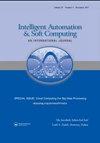工业澄清过程的机器学习建模与控制
IF 2
4区 计算机科学
Q2 Computer Science
引用次数: 30
摘要
在制糖生产中,非线性澄清过程的模型参数估计和控制器整定是人们关注的主要问题。由于制糖工业的澄清过程是困难的和非线性的,使用识别方法获得准确的模型是至关重要的。为了调节澄清过程和识别模型参数,本文提出了一种状态转换算法(STA)。首先,使用正常的系统识别过程估计澄清器的模型参数。然后利用STA来提高已确定的系统参数的准确性。采用遗传算法(GA)、粒子群算法(PSO)和状态转移算法等元启发式算法对算法生成的最精确模型进行评估。通过捕获过程的主要动态特征,由状态转换算法(STA)生成的澄清器模型更像实际的澄清器过程。根据研究结果,本文提供的控制器可以在任何非线性过程的控制中获得比标准控制器设计更好的性能,并且STA对非线性过程的建模非常有帮助。本文章由计算机程序翻译,如有差异,请以英文原文为准。
Machine Learning for Modeling and Control of Industrial Clarifier Process
In sugar production, model parameter estimation and controller tuning of the nonlinear clarification process are major concerns. Because the sugar industry’s clarification process is difficult and nonlinear, obtaining the exact model using identification methods is critical. For regulating the clarification process and identifying the model parameters, this work presents a state transition algorithm (STA). First, the model parameters for the clarifier are estimated using the normal system identification process. The STA is then utilized to improve the accuracy of the system parameters that have been identified. Metaheuristic algorithms such as Genetic Algorithm (GA), Particle Swarm Optimization (PSO), and State Transition Algorithm are used to evaluate the most accurate model generated by the algorithms. By capturing the principal dynamic features of the process, the clarifier model produced from State Transition Algorithm (STA) acts more like the actual clarifier process. According to the findings, the controllers provided in this paper may be used to achieve greater performance than the standard controller design during the control of any nonlinear procedure, and STA is extremely helpful in modeling a nonlinear process.
求助全文
通过发布文献求助,成功后即可免费获取论文全文。
去求助
来源期刊

Intelligent Automation and Soft Computing
工程技术-计算机:人工智能
CiteScore
3.50
自引率
10.00%
发文量
429
审稿时长
10.8 months
期刊介绍:
An International Journal seeks to provide a common forum for the dissemination of accurate results about the world of intelligent automation, artificial intelligence, computer science, control, intelligent data science, modeling and systems engineering. It is intended that the articles published in the journal will encompass both the short and the long term effects of soft computing and other related fields such as robotics, control, computer, vision, speech recognition, pattern recognition, data mining, big data, data analytics, machine intelligence, cyber security and deep learning. It further hopes it will address the existing and emerging relationships between automation, systems engineering, system of systems engineering and soft computing. The journal will publish original and survey papers on artificial intelligence, intelligent automation and computer engineering with an emphasis on current and potential applications of soft computing. It will have a broad interest in all engineering disciplines, computer science, and related technological fields such as medicine, biology operations research, technology management, agriculture and information technology.
 求助内容:
求助内容: 应助结果提醒方式:
应助结果提醒方式:


